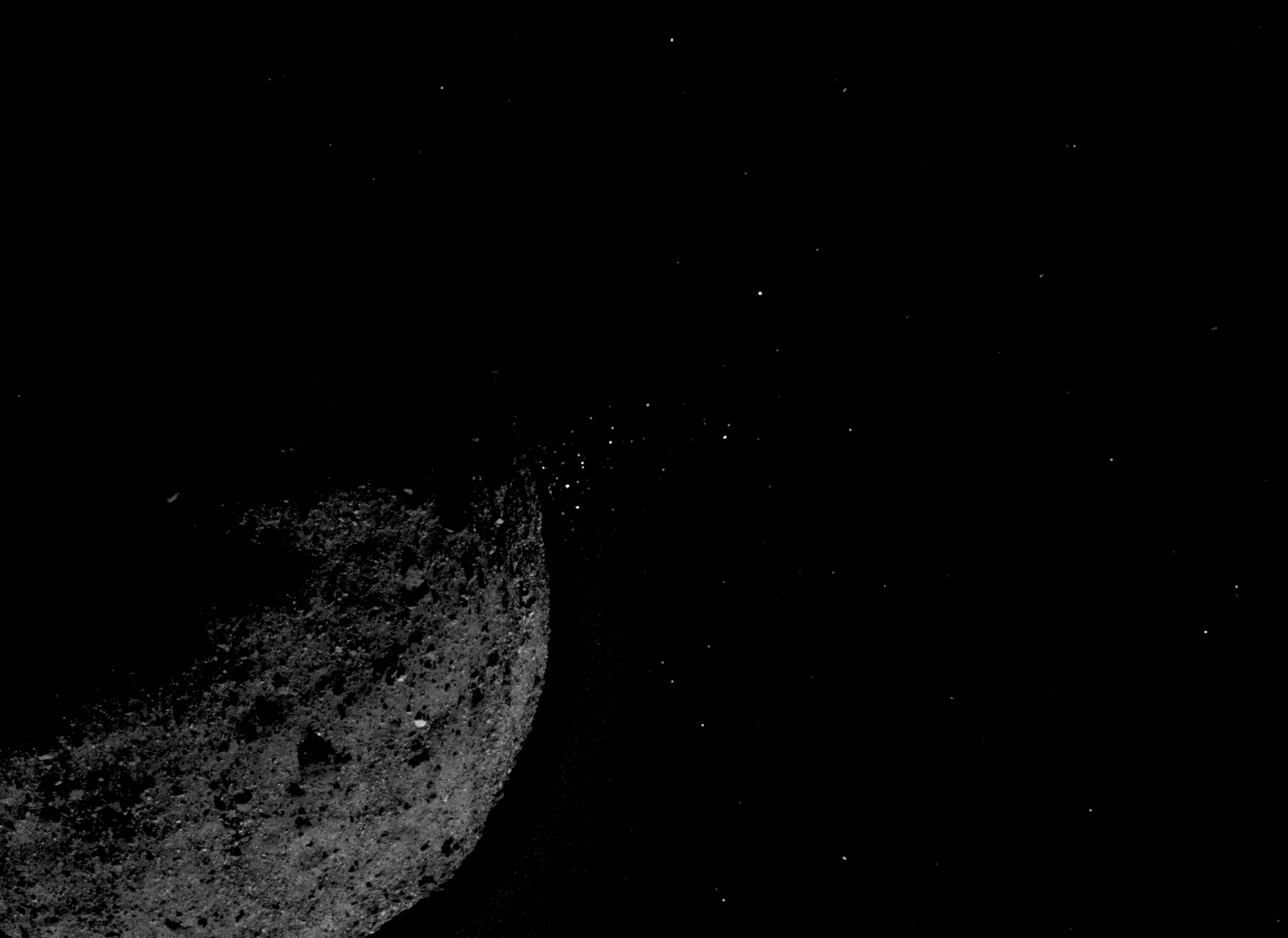
The asteroid Bennu is the target of a NASA mission to collect a sample and return it to Earth, in order to learn about the formation of the early solar system. The OSIRIS-REx craft entered orbit around Bennu on December 31, 2018, and it isn’t scheduled to return until 2023. But the mission is already exhibiting some unexpected findings.
The strangest discovery is the plumes of particles which are being energetically ejected from the surface of Bennu. This is the first time that astronomers have observed this kind of activity on an asteroid.
The plumes were spotted on January 6 as the OSIRIS-REx approached the asteroid and captured images from orbit at a distance of one mile (1.6 kilometers). At first the researchers were concerned that the particles could damage the craft so they performed a safety assessment, but to their relief the craft was fine and they could continue their study of Bennu up close.
For the last two months the team has been gathering data on the asteroid and its particle plumes, trying to work out what could be causing them. They saw that while most of the particles were shot out from Bennu and into space, some particles orbited around the asteroid before landing back on its surface.
Bennu had another surprise in store for the researchers: where they had expected to find an asteroid with a smooth surface and a few large boulders, they in fact observed a rough surface densely packed with boulders, requiring a change in OSIRIS-REx’s flight and sample collection plans.
Both of these issues took the research team entirely by surprise, but they are excited by the new findings: “The discovery of plumes is one of the biggest surprises of my scientific career,” Dante Lauretta, OSIRIS-REx principal investigator at the University of Arizona, Tucson, said in a statement. “And the rugged terrain went against all of our predictions. Bennu is already surprising us, and our exciting journey there is just getting started.”
The positive appraisal was echoed by Lori Glaze, acting director of the Planetary Science Division at NASA Headquarters in Washington, who pointed out that unexpected discoveries are the point of scientific exploration: “The first three months of OSIRIS-REx’s up-close investigation of Bennu have reminded us what discovery is all about — surprises, quick thinking, and flexibility,” Glaze said.
“We study asteroids like Bennu to learn about the origin of the solar system. OSIRIS-REx’s sample will help us answer some of the biggest questions about where we come from.”
Editors' Recommendations
- Watch NASA’s capsule with asteroid samples hurtling to Earth
- There’s a slim chance asteroid Bennu will collide with Earth in 2300
- How to watch NASA bring home a piece of asteroid on Monday
- NASA successfully scoops up a sample from asteroid Bennu
- Check out these amazing Bennu asteroid images taken by NASA spacecraft




